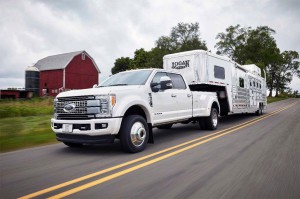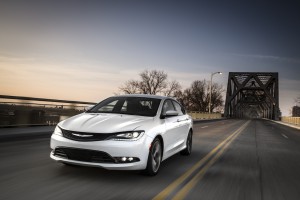U.S. auto sales have been taking some uncertain detours in recent months, May numbers tumbling before the industry showed signs of rebounding in June. Preliminary estimates, meanwhile, suggest the market will look good for July, the industry back on track for another record year.
But senior Ford officials say that we may be at the end of the line for the current recovery, with sales likely to begin another cyclical slide in the near-term.
“The growth is over,” Ford Chief Financial Officer Robert Shanks told the Reuters news service. The executive separately told analysts and reporters that, “We see the second half being softer than the first half. Looking into 2017, we think we will see further softness.”
This has been one of the strongest recoveries in U.S. history – a turnaround following the industry’s worst downturn since the Great Depression. At bottom, demand dropped to below 10 million, but it was back up at record levels in 2014, and surged to 17.47 million last year.
The immediate question is what will happen in 2016. The industry has remained on another record pace, but growth has been averaging in the low single-digit range, but a few months more solid, and May delivering an unexpected sharp slide.
(How will July sales look? Click Here.)
Analysts differ in their July estimates, though the seasonally adjusted annual sales rate, or SAAR, is expected to be in the 17 million range.
“We’re not talking about a collapse,” Shanks said in his Reuters interview.
Nonetheless, his comments clearly put some gloom over what, for Ford, was already a cloudy day, the maker delivering weaker-than-expected second-quarter earnings of $2 billion, a $190 million dip from the same period the year before. Ford shares have taken a sharp hit since the earnings were reported, but have taken a modest turn upwards in midday Friday trading on the New York Stock Exchange.
(Click Here for more on Ford’s Q2 earnings.)
Shanks is by no means the only industry expert anticipating this year will bring the end to a solid and profitable recovery.
While the industry’s current, modest growth, “may go into part of next year, we’ve peaked,” said Dave Sullivan, a senior automotive analyst with the consulting firm AutoPacific, Inc. There are signs that much of the market has “already” leveled off, said Sullivan.
May’s unexpectedly weak sales offered a chilling indication that the boom years may be coming to an end, though June’s numbers were up about 2%. For the full year, AutoPacific anticipates Americans will buy 17.881 million new cars, trucks and crossovers, up from 17.406 million the year before.
But others aren’t that optimistic. LMC Automotive, for example, has issued an advisory cutting its forecast for all of 2016 by 300,000 vehicles, or 1.7%, to 17.4 million. And based on what it describes as the “recent plateauing of year-on-year sales growth,” the firm is reducing its sales estimates all the way out to 2023.
That said, “it does not necessarily signal that further contractions or an automotive recession is imminent,” said Jeff Schuster, Senior Vice President Forecasting at LMC Automotive.
(For more on those two forecasts, Click Here.)
One of the big questions is how automakers will respond to a weakening market. In decades past, and particularly leading up to the Great Recession that hit full force in 2009, manufacturers flooded the market with low-cost leases and other incentives, though the payoff was far from what they expected.
“There’s no question we’ve seen an increase in incentives, and it’s more than we expected at the beginning of the year,” Ford’s Shanks Shanks told analysts Thursday, as “various competitors protect their share.”
A new report from Edmunds.com finds that leasing has hit an all-time high in the U.S.
Another question is where the downturn will hit hardest. The passenger car side of the business is already feeling the impact of a softening in demand. But that also reflects the dramatic shift away from sedans and coupes toward pickups and utility vehicles. Light trucks, on the whole, now account for about three of every five vehicles Americans are buying.
Fiat Chrysler Automobiles, for one, is dropping once key passenger car models, the Chrysler 200 and Dodge Dart, the maker converting two Midwest plants to light truck production. In fact, FCA won’t produce a single sedan in the United States by the end of 2017, CEO Sergio Marchionne announced this past week – though several models will still be sourced out of Canada.
If anything, some light truck models have actually been in short supply in recent months, and there’s some question about whether increased availability of those models will offset the broader market slowdown, keeping the U.S. automotive recovery going a bit longer – or at least forestalling the normal cyclical slump.



